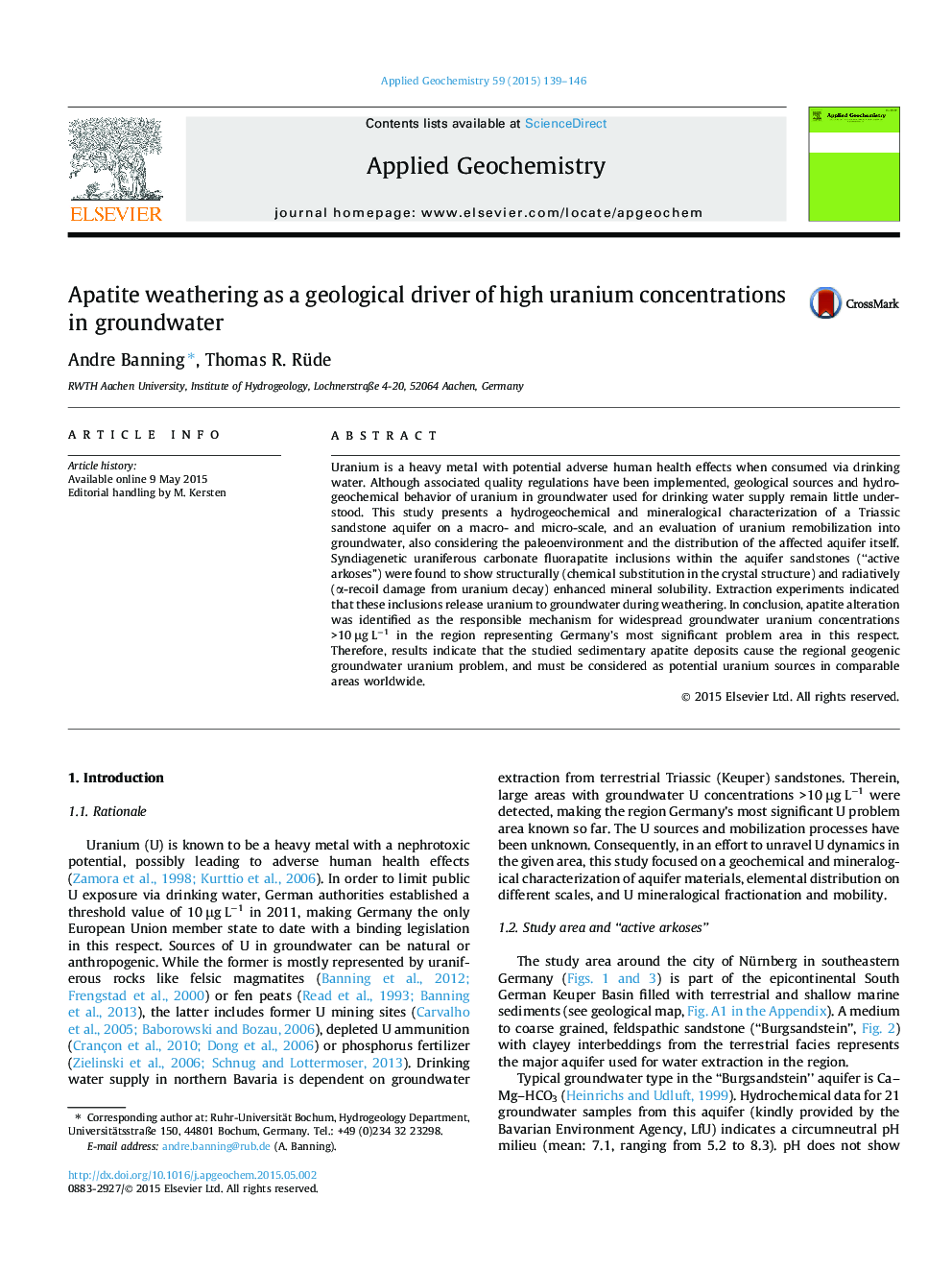| Article ID | Journal | Published Year | Pages | File Type |
|---|---|---|---|---|
| 4435677 | Applied Geochemistry | 2015 | 8 Pages |
•High groundwater U concentrations occur in a Triassic aquifer of northern Bavaria.•U is hosted by carbonate fluorapatite phases (francolite) in aquifer inclusions.•Distribution of uraniferous facies is congruent with spatial groundwater U pattern.•Carbonate substitution and α-recoil damage from U decay enhance mineral solubility.•Mobilization of U to groundwater occurs during francolite weathering.
Uranium is a heavy metal with potential adverse human health effects when consumed via drinking water. Although associated quality regulations have been implemented, geological sources and hydrogeochemical behavior of uranium in groundwater used for drinking water supply remain little understood. This study presents a hydrogeochemical and mineralogical characterization of a Triassic sandstone aquifer on a macro- and micro-scale, and an evaluation of uranium remobilization into groundwater, also considering the paleoenvironment and the distribution of the affected aquifer itself. Syndiagenetic uraniferous carbonate fluorapatite inclusions within the aquifer sandstones (“active arkoses”) were found to show structurally (chemical substitution in the crystal structure) and radiatively (α-recoil damage from uranium decay) enhanced mineral solubility. Extraction experiments indicated that these inclusions release uranium to groundwater during weathering. In conclusion, apatite alteration was identified as the responsible mechanism for widespread groundwater uranium concentrations >10 μg L−1 in the region representing Germany’s most significant problem area in this respect. Therefore, results indicate that the studied sedimentary apatite deposits cause the regional geogenic groundwater uranium problem, and must be considered as potential uranium sources in comparable areas worldwide.
